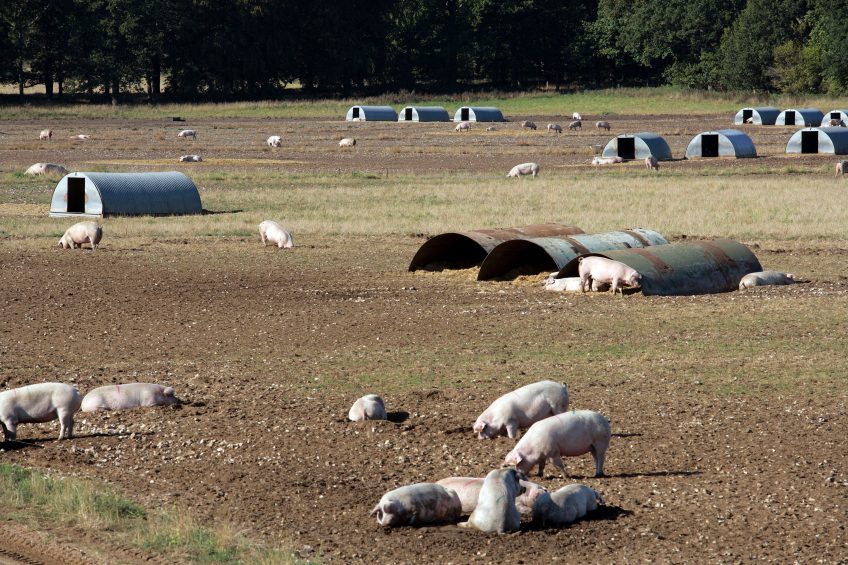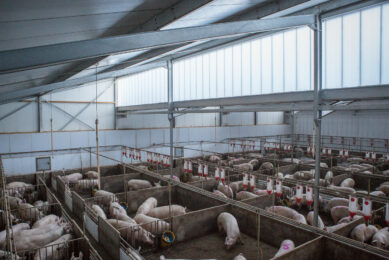United Kingdom: A pig industry on the edge

Foot-and-Mouth Disease, stricter welfare regulations than its neighbours and on top that there is Brexit. It’s fair to say that the British pig industry has had a number of hard blows to deal with over the last few decades. Although challenges remain, the industry is in better shape to face the future.
Pig production in the United Kingdom has a proud history, but the statistics suggest that the sector has contracted significantly in the last 2 decades and it now provides only about half of the country’s pig meat needs. The causes of relatively poor returns over time and the industry’s lack of competitiveness have been a constant source of debate by farmers who have blamed: disease outbreaks, high feed prices, environmental regulations, the multiple retailers, and, most frequently, the high cost of new welfare standards for pigs that were introduced in 1999.
Profits, and the road to recovery, have been elusive and the UK’s pig industry has, over the last 20 years, shrunk to around 60% of the size it was pre-2000. It has, literally, been on the cliff edge more than once with industry leaders often giving dire warnings about low prices and farmers’ losses. Most of the cutback in the breeding herd occurred by 2008 and total pig numbers have been relatively stable since 2005.
Figure 1 – UK breeding herd and total pigs, 1998-2017 (June census).

Signs of confidence returning
In recent years, however, there have been signs of confidence returning and productivity on the farm improving. In the post-farmgate value chain significant concentration has happened with three large players now dominating the slaughter and processing functions.
However, if post-Brexit trade policies stimulate more imports and higher labour costs it’s a valid question to ask if the UK pig industry might return to the cliff edge and with another round of contraction in the years ahead. That question is underlined by the negative impact that Brexit might have on the UK’s carcass balance/producer returns – if the export trade to the EU of some categories of pig meat (unwanted on the domestic market) is disrupted.
|
There are about 10,000 pig farms in the UK but around 90% of production comes from about 1,000 assured farms including 10 corporate companies which account for 35% of the breeding sows. The UK has a distinct and varied production structure. There are indoor units, outdoor units, straw-based accommodation and slatted accommodation. That said, and driven by welfare concerns and consumer preferences, outdoor systems for breeding pigs account for around 40% of all sows. The British Agriculture and Horticulture Development Board (AHDB), a levy board representing the pig industry, concedes that this has had significant and negative impacts on the productivity of the industry. The relatively dry climate of the eastern part of the UK (East Anglia and Yorkshire) has encouraged outdoor units to be sited there – but this is also where the cereals are grown in the UK, so that is where pig rearing and finishing activities would be expected to be found anyway. Unfortunately, the eastern side of the UK is not where most of the population resides and the labour needs of pig production and pig meat processing have increasingly been supplied by (mainly) eastern European workers.
Figure 2 – UK pig prices – the long climb back.

UK – attractive for exports
The UK is an attractive market for exporters. The UK imports around 60% of all the pig meat it consumes and that amounts to just under 1 million tonnes each year. The EU supplies almost all the pork imported into the UK, due to high import tariffs on pork from outside the EU and that underlines the significance of Brexit – lower cost third country suppliers will be queuing up to access the UK market if post-Brexit trade deals permit. Denmark is currently the UK’s largest supplier, accounting for over a quarter of all UK pork imports. Along with Germany and the Netherlands, these 3 EU countries account for about two-thirds of imports. Fresh and frozen pork accounts for about 40% of all pig meat imports (the rest is processed products).
Animal welfare standards in the UK are undoubtedly higher than in most other countries and this dates back to 1999/2000 when the UK unilaterally introduced more stringent welfare rules. The use of sow stalls is banned in the UK, while sows in the rest of the EU can still be kept in stalls for up to 4 weeks after service. Furthermore, through the RSPCA and other animal protection organisations, animal welfare has been given a high profile with UK consumers.
Unfortunately, that profile has not been matched by consumer purchase decisions in supermarket aisles and the large volume of pig meat imported into the UK makes this ‘consumer schizophrenia’ a significant strategic threat to UK pig farmers. One reaction has been for farmers to monitor retailers’ product offers and insist on accurate labelling and assurance schemes that assist consumer decisions. These efforts were given an unexpected boost when the meat labelling fraud known as the ‘Horsegate’ scandal broke in 2013. The UK’s major multiple food retailers realised that they needed to be more diligent in checking their supply chains and that these chains needed to be shortened. One reaction was a flurry of retailer commitments to sell 100% British pork (but not bacon or ham, etc).
3 large pig meat processors
The 3 largest pig meat processors in the UK are:
- Cranswick,
- Karro Food Group
- Tulip
These firms all have quite different ownership structures. Cranswick is listed on the London Stock Exchange and it has grown consistently (by acquisition and organically) since the 1980s. It is recognised as being very profitable and successful at pig meat-related value added activities and it is reported that it slaughters around 50,000 pigs per week. The Karro Food Group was bought by a private equity firm, CapVest Partners, from another private equity company, Leeds-based private equity firm Endless in March 2017. It claims to slaughter 45,000 pigs per week. Tulip is part of the Danish Crown Group and thus is owned, ultimately, by a cooperative of Danish pig farmers. It slaughters around 30,000 pigs per week in the UK.
Figure 3 – UK pig prices, June 1995-October 2017.

The future for pigs in the UK?
What do all these numbers and the charts shown here say about the UK pig industry’s future? Well, there is no doubt that the industry has ‘thinned out’ over the last 20 years and that there are now some commercially viable pig production and processing farms and firms in the sector after the post-2000 ‘cull’.
However, the advent of Brexit has brought uncertainty and new challenges. Further, the UK’s competitors are not standing still – even if protective tariffs are maintained post-Brexit and/or a ‘soft Brexit’ deal is secured. Welfare standards are improving in foreign suppliers, the use of antibiotics, new environmental regulations, and developing value-added pork products in the competition against chicken, are all areas where the UK will be challenged.
And, of course, there is the ongoing productivity handicap for UK pig producers stemming from the British public’s fascination with ‘outdoor-reared’ pigs. That handicap may yet be extended to the labour function if non-UK EU workers are discouraged from remaining or coming to the UK to be employed in the UK’s pig meat value chain. It seems that the UK’s pig farmers and their processor customers may be living on the edge for a bit longer yet.


 UK at a glance
UK at a glance








